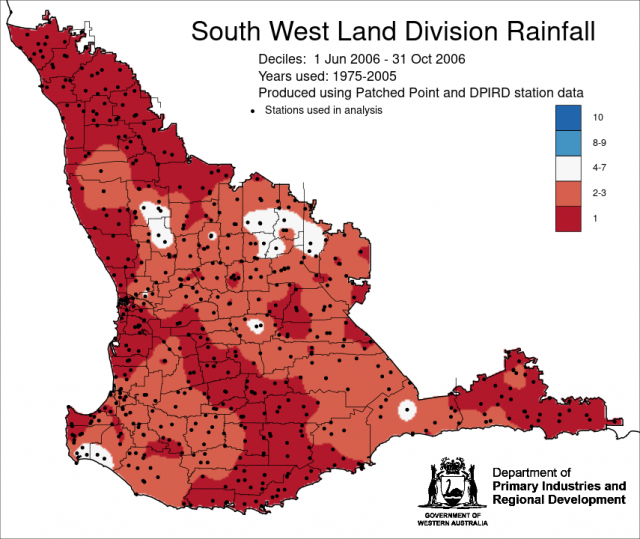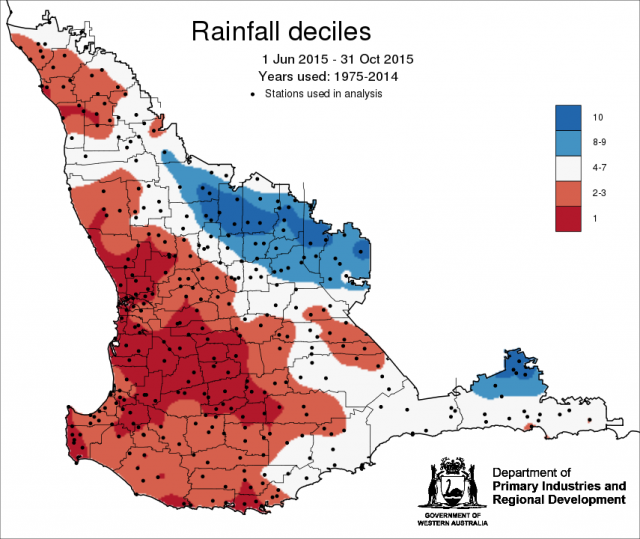Summary
Recent conditions: growing season rainfall (since 1 April) has been decile 1-3 for the majority of the South West Land Division (SWLD), with some locations still waiting for an autumn break. Rainfall outlook for SWLD for winter, June to August and further ahead, August to October is for below average rainfall, based on a survey of twenty international models.
Things to consider:
- Minimal rainfall to date for the majority of the SWLD, means limited soil water (see attached maps) with some places still looking for an autumn break (either 25 mm over 5 days or 15 mm over 3 days [for dry sowing into a furrow]). Pasture growth is suppressed and water storage on farm is minimal.
- Mean sea level pressure over the South West Land Division is forecast to be high (high pressure system) until at least September, resulting in blocking highs, which will suppress rainfall from winter cold fronts.
- Chances of both an El Niño and a positive Indian Ocean Dipole developing from June. Models indicate both events lasting through to October. If an El Niño coincides with a positive IOD, there is a clear signal for reduced winter-spring rainfall for large parts of the South West Land Division.
- The Bureau of Meteorology’s Water and the Land forecast (average of 7 models) is indicating between 5-25 mm of rain for the SWLD in the next 8 days from a cold front.
Past years with an El Niño and positive Indian Ocean Dipole
Current outlook from the Bureau of Meteorology Climate Driver update is for an El Niño to develop in the Pacific Ocean and a positive Indian Ocean Dipole in the Indian Ocean to develop in June (see below). Remember that every El Niño and IOD event is different and doesn’t always mean dry conditions.
Past El Niño and positive IOD events include 2006 and 2015. June to October 2006, for the SWLD, was decile 1-3 rainfall, 2015 decile 1-3 for the majority, and decile 8-10 for eastern grainbelt and northern Esperance shire (see maps). Average wheat yields were 1.3 t/ha and 1.7 t/ha, respectively. Looking at your own rainfall records from 2006 and 2015 can give you an idea of what may happen for the reminder of the year. Examples are for Yuna, Beacon, and Ongerup.


